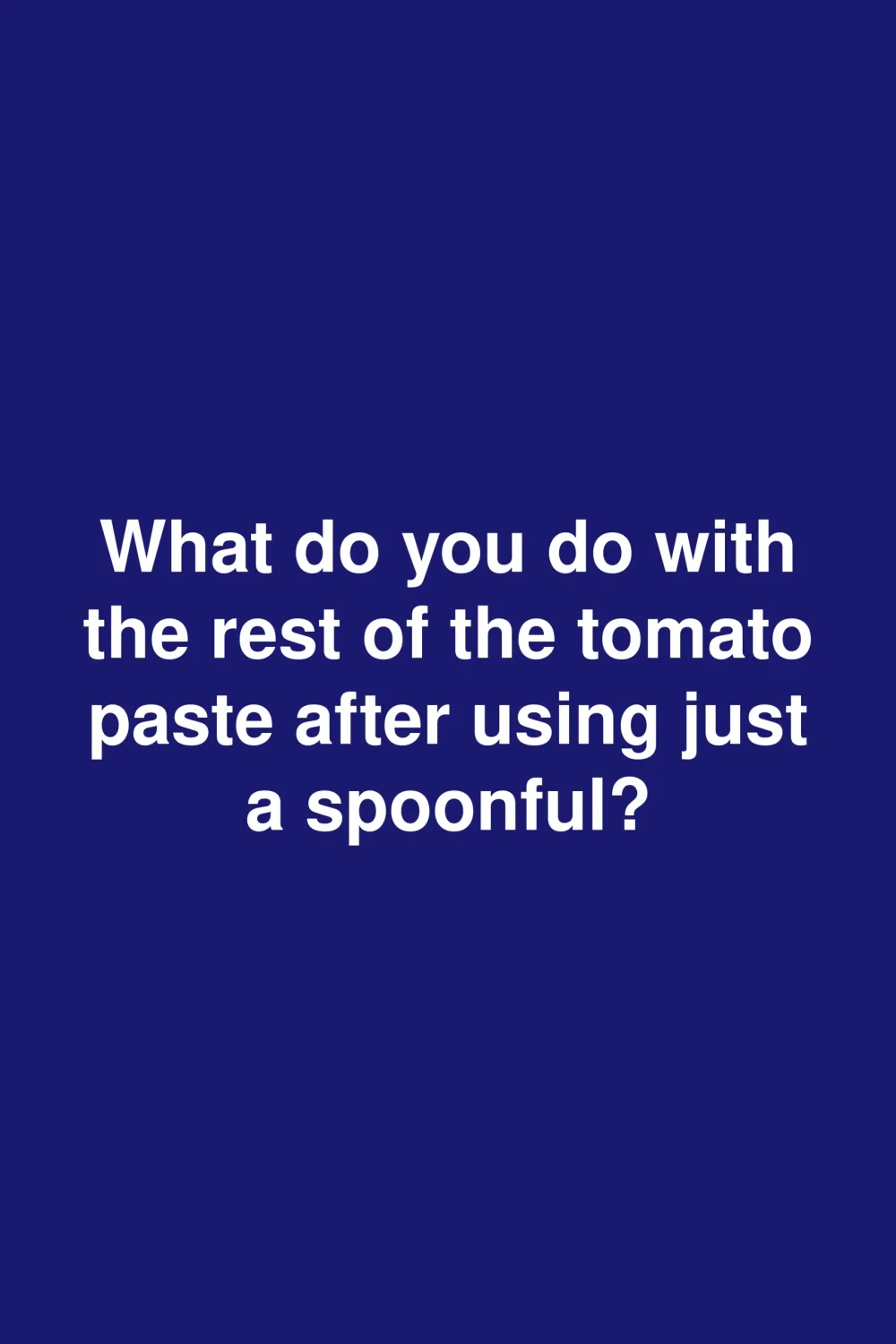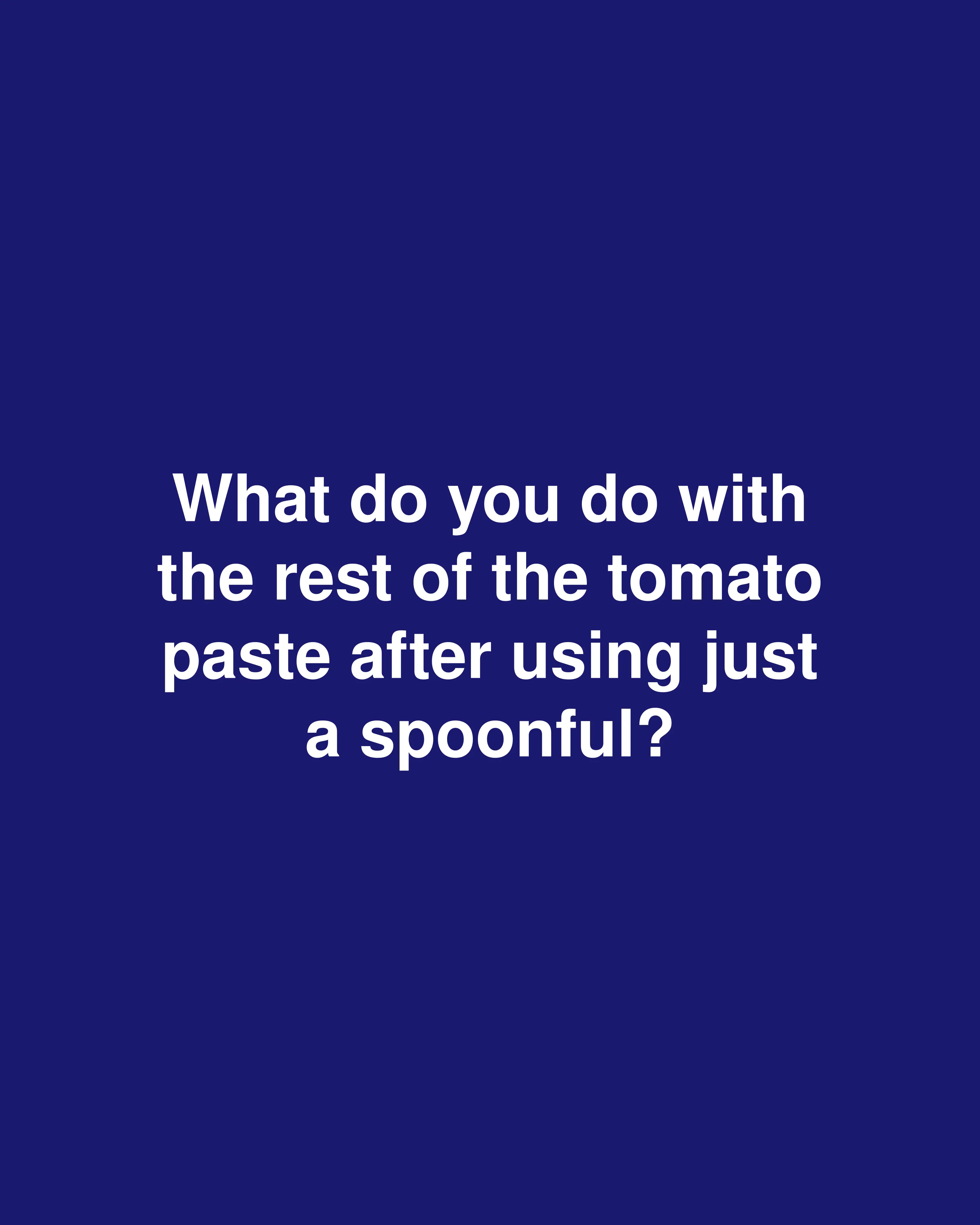Want to save this recipe?
Enter your email below and we’ll send the recipe straight to your inbox!
Never Waste Tomato Paste Again: 10 Brilliant Ways to Use Every Last Bit
We’ve all been there – a recipe calls for just a tablespoon of tomato paste, and the rest of the can sits in your refrigerator until it eventually grows mold and gets tossed. What a waste! That rich, concentrated tomato flavor is too precious to throw away, especially when there are so many creative ways to use it up.
The Untapped Potential of Leftover Tomato Paste
Tomato paste is culinary gold – it’s concentrated umami in a tube or can. Made by cooking tomatoes for hours until they reduce to a thick, intense paste, it adds depth and richness to dishes without watering them down. The problem? Most recipes only call for a tablespoon or two, leaving you with excess that often goes forgotten.
What makes tomato paste special is its versatility. That concentrated flavor can transform ordinary dishes into extraordinary ones, adding complexity without overwhelming other ingredients. It’s not just for Italian cooking either – tomato paste works beautifully in cuisines from around the world.
Smart Storage Solutions for Maximum Shelf Life
Before diving into ways to use tomato paste, let’s talk about how to store it properly so it doesn’t go bad before you have a chance to use it:
Freeze in Tablespoon Portions
My favorite method is to line an ice cube tray with plastic wrap, measure tablespoons of tomato paste into each cavity, freeze until solid, then transfer the frozen portions to a zip-top bag. This way, you can grab exactly what you need without thawing the entire amount.
Make Tomato Paste Coins
Drop tablespoon-sized dollops onto a parchment-lined baking sheet, freeze until solid, then store in a container. These “tomato paste coins” are perfect for dropping into soups, stews, or sauces.
Roll It Into a Log
For tube-style convenience, spread leftover paste on plastic wrap in a thin line, roll it up, and twist the ends like a candy wrapper. Slice off what you need when cooking.
10 Delicious Ways to Use Up Tomato Paste
Enhance Soups and Stews
A tablespoon of tomato paste added at the beginning of cooking, just after sautéing your aromatics, adds incredible depth to almost any soup or stew. Try browning the paste slightly in the oil before adding other ingredients – this caramelizes the sugars and intensifies the flavor.
I add a dollop to everything from beef stew to lentil soup, even in recipes that don’t traditionally call for tomato. The paste doesn’t make dishes taste “tomatoey” – it just makes them taste better.
Create Quick Pasta Sauces
In a pinch, you can make a delicious pasta sauce by sautéing garlic in olive oil, adding a few tablespoons of tomato paste, and thinning with pasta cooking water. Season with salt, pepper, and herbs, and you’ve got a sauce that clings beautifully to pasta. For a creamier version, add a splash of heavy cream or a dollop of ricotta.
Upgrade Your Marinades
Tomato paste makes an excellent addition to marinades for meat, poultry, or vegetables. The natural acids help tenderize protein while adding flavor. Mix it with olive oil, balsamic vinegar, garlic, and herbs for a Mediterranean-inspired marinade that works beautifully with chicken or pork.
Boost Homemade Salad Dressings
Whisk a teaspoon of tomato paste into your next vinaigrette for added body and a subtle umami kick. It pairs particularly well with balsamic or red wine vinegar-based dressings and complements salads containing roasted vegetables, grains, or robust greens.
Create Restaurant-Quality Pan Sauces
After searing meat, deglaze the pan with wine or broth, then whisk in a teaspoon of tomato paste for an instantly rich sauce. Let it reduce slightly, finish with a pat of butter, and you’ve got a professional-tasting sauce in minutes.
Make the Best Homemade Pizza Sauce
Mix tomato paste with a splash of water, olive oil, minced garlic, dried oregano, and a pinch of sugar for a quick pizza sauce that won’t make your crust soggy. The concentrated paste ensures your pizza has deep tomato flavor without the watery consistency that can come from crushed tomatoes.
Spice Up Your Breakfast
Add depth to your morning eggs by adding a small dab of tomato paste to your scramble or frittata mixture. It pairs beautifully with Mediterranean ingredients like feta, olives, and spinach.
Create Custom BBQ Sauce
Tomato paste makes an excellent base for homemade barbecue sauce. Combine it with brown sugar, vinegar, Worcestershire sauce, and spices like paprika and cayenne. Simmer until thickened for a sauce that beats anything from a bottle.
Enhance Grain Bowls and Rice Dishes
Stir a spoonful of tomato paste into the cooking water for rice or grains to add a subtle flavor boost and beautiful color. This works especially well in Spanish rice, pilaf, or as a base for grain bowls.
Make Shakshuka-Inspired Dishes
Create a quick version of this Middle Eastern favorite by sautéing onions and peppers, adding tomato paste thinned with a bit of water, then poaching eggs directly in the sauce. Serve with crusty bread for a satisfying meal any time of day.
Common Mistakes to Avoid
Letting It Oxidize
Once opened, tomato paste oxidizes quickly. Always transfer leftover paste from a can to an airtight container or freeze it using one of the methods above.
Not Caramelizing It
Many cooks miss the opportunity to brown tomato paste before adding liquid ingredients. Taking an extra minute to caramelize it in oil brings out complex, sweet flavors that transform your dish.
Overlooking Non-Italian Uses
Don’t limit tomato paste to Italian cuisine. It’s widely used in Middle Eastern, African, and Eastern European cooking, making it perfect for expanding your culinary horizons.
Extra Benefits Beyond Flavor
Financial Advantage
Using up tomato paste instead of tossing it saves money, especially if you buy the premium imported varieties. Plus, learning to transform pantry staples like tomato paste into flavorful meals means fewer takeout orders.
Nutritional Benefits
Tomato paste is rich in lycopene, an antioxidant that may help reduce the risk of heart disease and certain cancers. Cooking tomatoes actually increases the bioavailability of lycopene, making tomato paste even more nutritious than raw tomatoes.
Reduced Food Waste
Finding creative ways to use up ingredients like tomato paste helps reduce food waste, which is better for both your wallet and the environment.
Quick Recap: Never Waste Tomato Paste Again
Tomato paste is a versatile flavor powerhouse that deserves to be used to its full potential. From enhancing soups and stews to creating quick pasta sauces and marinades, this humble ingredient can elevate countless dishes. By properly storing leftover paste and incorporating it into your everyday cooking, you’ll reduce waste while improving your meals.
The next time you open a can or tube of tomato paste, remember: that leftover portion isn’t a problem – it’s an opportunity to add incredible flavor to your next meal!
Frequently Asked Questions
How long does opened tomato paste last in the refrigerator?
When properly stored in an airtight container, opened tomato paste can last 5-7 days in the refrigerator. However, freezing is recommended for longer storage.
Can I substitute tomato paste for other tomato products?
Yes, but with adjustments. To substitute for tomato sauce, mix 1 part tomato paste with 2 parts water. For crushed tomatoes, use 1 part tomato paste to 3 parts water, plus a pinch of sugar and salt.
Is there a difference between tomato paste in a tube versus a can?
The product is essentially the same, but tube tomato paste often contains slightly more salt and sometimes preservatives to maintain freshness after opening. Tubes are designed for easier storage of leftover paste.
Can homemade tomato paste be substituted for store-bought?
Absolutely! Homemade tomato paste tends to have a fresher, more vibrant flavor. You may need to adjust quantities slightly as homemade versions can vary in concentration.


